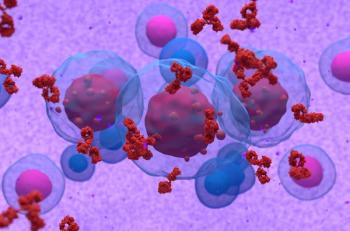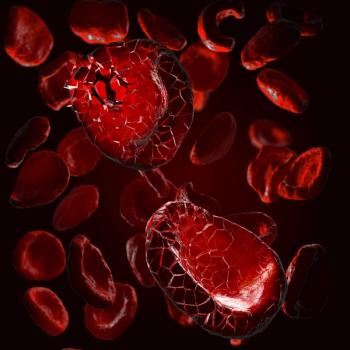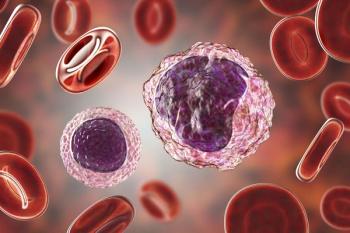
Link Found Between mTORC1, G2/M DNA Damage Checkpoint
Guang Peng, MD, PhD spoke to Cancer Network about the recent discovery that mTORC1 can help determine cell fate after DNA damage.
Guang Peng, MD, PhD, is an associate professor at the department of clinical cancer prevention, division of cancer prevention and population sciences, at the University of Texas MD Anderson Cancer Center, Houston. Peng studies genomic instability, DNA repair networks, and tumor evolution. Cancer Network spoke with
Cancer Network: Your lab focuses on understanding the causes of genomic instability and how it drives tumorigenesis and tumor progression. What was known about mTOR pathway roles in genome stability prior to your team’s new nature communications study?
Dr. Peng: It has been known that mTOR serves as a central regulator of cell metabolism and cell fate decisions in response to different signals, including nutrient and energy status as well as stress levels. mTOR integrates signaling transduction networks from traditional PI3K/AKT/mTOR pathways to pathways related to DNA damage response, but the role of mTOR itself in genome stability is usually indirect. The cross talk relies on the presence of other proteins, such as p53, AKT (protein kinase B), and PTEN (phosphatase and tensin homolog).
Recent studies have shown synergy of the combination of mTOR inhibitors with inhibitors related to DNA damage response in different types of cancer. The increased DNA damage found in cells treated with drug combination demonstrates a more direct role of mTOR in genome stability.
Cancer Network: The G2/M cell cycle checkpoint system ensures cells do not undergo mitosis before DNA damage is repaired. How did your team interrogate the role of the nutrient signaling integrator mTORC1 in G2/M checkpoint recovery?
Dr. Peng: The G2 phase is the cell cycle phase for cells to synthesize basic needs for mitosis and for cell survival after mitosis. When the G2/M cell cycle checkpoint is activated, cells either hold the synthesis or degrade proteins associated with cell cycle progression to ensure the pause.
As a major anabolic pathway regulating protein synthesis in cells, mTORC1 (mammalian target of rapamycin complex 1) signaling should be required to resume cell cycle progression. This is also the reason why we picked mTOR as our study target when we got the result from our array data.
Cancer Network: What did you and your team discover about mTORC1’s role in G2/M recovery and mitosis following DNA damage?
Dr. Peng: We found that mTORC1 is required for cells to resynthesize cyclin B1 and PLK-1 (polo-like kinase 1) when cells recover from ionizing radiation (IR)-induced DNA damage.
During G2/M transition, cyclin B1 forms a protein complex with the key enzyme DK1 (cyclin-dependent kinase 1) to trigger mitosis, and PLK-1 is a positive regulator of CDK1. When the G2/M checkpoint is activated, cyclin B1 and PLK-1 gene transcription are repressed and proteins are degraded in many types of cells. The decreased levels of cyclin B1 and PLK-1 ensure the function of CDK1 in mitosis is suppressed.
During G2/M checkpoint recovery after DNA damage, mTORC1 regulates the expression of KDM4B, a histone modification enzyme, and the changes of histone modification on genes encoding cyclin B1 and PLK-1 further facilitates their transcription.
Inhibition of the mTORC1 pathway prolongs cell cycle arrest after DNA damage. Conversely, cells with hyper-mTORC1 activity caused by TSC2 [tuberin-protein] depletion exhibited accelerated G2/M checkpoint recovery.
In order to treat TSC2-depleted tumors with mTORC1 hyperactivity, the strategy we used is to further abrogate the G2/M checkpoint by inhibiting WEE1, a negative regulator of CDK1, to induce mitotic catastrophe and apoptosis in TSC2-depleted cells.
Cancer Network: What did you learn about cells with upregulated mTORC1 activity?
Dr. Peng: mTORC1 is the main complex that couples the environment cues, especially the abundance of nutrients and energy, to G1 cell cycle progression.
Persistent high mTORC1 activity promotes G1/S transition and further facilitates cell growth and cell division, even under nutrient and energy deprivation, which is common in cancer.
Based on the functions of mTORC1, it is reasonable [to conclude] that high activity of mTORC1 also facilitates G2/M transition, and the phenomenon is more dramatic when cells carry DNA damage, since the G2 phase is usually short.
It is interesting to know the limits of cells with high mTORC1 activity: how fast the cell cycle transition can be, and how much DNA damage a cell can tolerate. These are two key questions to study cancer cells with high mTORC1 activity.
Cancer Network: What are the potential implications for cancer control and the development of new anticancer agents?
When cells have G1 checkpoint defects, they strongly depend on the G2 checkpoint for DNA damage repair. We think cells with high mTORC1 activity may be the same.
The strategies to treat cancer with high mTORC1 activity can be either to strengthen the checkpoint activity or to force cell cycle progression in the presence of DNA damage. The choice depends on the balance between the speed of cell proliferation and the degree of DNA damage.
More systemic studies are needed to find the best combination for cancer treatment.
Newsletter
Stay up to date on recent advances in the multidisciplinary approach to cancer.


















































































